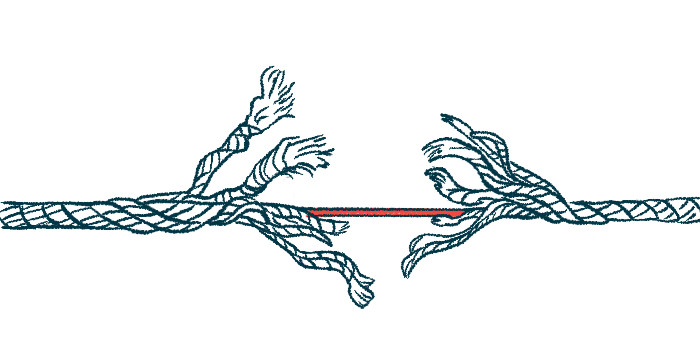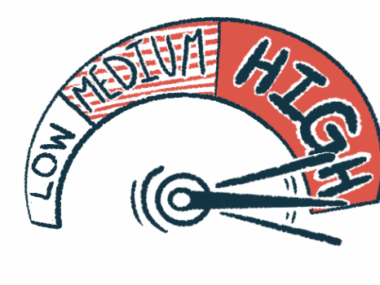Cancer risk 3 times higher in men with AAV, Turkish study finds
Older age at AAV diagnosis also heightens risk, patient registry data show
Written by |

Men with ANCA-associated vasculitis (AAV) are three times more likely to develop cancer, most often that affecting the lungs and the head and neck, than age-matched men in the Turkish population, a study based on patient registry data found.
Older age — age 60 or older — at AAV diagnosis also was an independent risk factor for cancer in this patient population. In turn, treatment with rituximab, an immunosuppressive medication, was associated with a reduced cancer risk.
“Greater attention should be given to cancer risks, and screening programs should be effectively employed in male AAV patients and AAV patients diagnosed at advanced age,” the researchers wrote.
The study, “Unveiling cancer risk in ANCA-associated vasculitis: result from the Turkish Vasculitis Study Group (TRVaS),” was published in the journal Internal and Emergency Medicine.
Work draws on findings from the Turkish Vasculitis Study Group
“The relationship between cancer and AAV has been investigated in patients from various geographical regions with distinct genetic backgrounds,” the researchers wrote, adding that some evidence suggests a higher risk of certain cancers in AAV patients.
“The increased risk of cancer in AAV patients has often been attributed to the use of high-dose cyclophosphamide in the literature,” the researchers wrote. Cyclophosphamide is an older immunosuppressive commonly used off-label as an AAV treatment.
However, evidence here is limited and with the development of novel immunotherapies like rituximab, further studies are needed to assess the risk of cancer in people with AAV, the scientists, led by those at Hacettepe University in the capital city of Ankara, added.
Rituximab works by specifically promoting the death of B-cells, the immune cells responsible for producing antibodies, including ANCAs, the self-reactive antibodies that drive AAV.
Researchers analyzed data from 461 AAV patients without a cancer history before their AAV diagnosis who were part of the multicenter Turkish Vasculitis Study Group (TRVaS) registry from 2020, when the registry opened, through July 2022.
Participants (51.2% men) were diagnosed at a median age of 49.8 years, and had been living with AAV for a median of 3.4 months. In terms of AAV types, 67.7% of the patients had granulomatosis with polyangiitis, 16.5% had eosinophilic granulomatosis with polyangiitis, 11.3% had microscopic polyangiitis, and 4.6% had unclassified AAV.
During follow-up, 19 patients (4.1%) developed cancer. The median duration between an AAV and cancer diagnosis was 46 months, or about 3.8 years. A total of 58 patients died of any cause: seven with cancer and 51 without cancer.
ANCAs against proteinase 3 were more common in patients with cancer
Compared with those who did not develop cancer, patients who did were significantly older at AAV diagnosis (median age, 61.3 vs. 49.7 years), were significantly more often men (94.7% vs. 49.3%), and were more likely to have a history of smoking (70.6% vs. 39.4%).
ANCAs against myeloperoxidase — one of the most common targets of AAV-driving antibodies — were more prevalent in patients without cancer (20.1% vs. 9.1%). In turn, ANCAs against proteinase 3, the other most common target, were more common in cancer patients (63.6% vs. 40.3%).
A significantly greater proportion of patients without cancer had been treated with rituximab relative to those who developed cancer (58.8% vs. 21.1%). No significant differences in cumulative cyclophosphamide dose were observed between AAV patients with and without cancer (median of 5.4 grams vs. 3 grams).
Overall, the risk of cancer was two times higher in AAV patients when compared with age- and sex-matched people from the general Turkish population. As all but one patient who developed cancer were male, the researchers conducted further risk analyses according to sex.
A higher cancer risk not seen for women with AAV in the study
Men with AAV had a three times higher risk of cancer than the age-specific cancer risk of the general male population in Turkey. Lung cancer was the most common, followed by head-and-neck cancer. The risk of cancer was similar between women with AAV and age-matched women in the general population.
Statistical analysis adjusted for potential influencing factors showed that among AAV patients, being a man significantly associated with a 22 times higher risk of cancer, and being 60 years and older at AAV diagnosis with a seven times higher risk.
Being treated with rituximab was significantly linked to a 94% lower risk of cancer.
“We found 2.1 times higher cancer risk in AAV patients compared to the age- and sex-specific cancer risk of the male Turkish population,” the researchers wrote, adding that male sex and older age at diagnosis “were associated with an increased risk of cancer.”
“While no relationship could be established between increased cancer risk and cyclophosphamide usage, an association was identified between reduced cancer risk and the utilization of rituximab,” they added.
“A more extended follow-up period for these patients has been planned,” the scientists noted.






